Dental Care in Japan

Top Image: Atikah Akhtar on Unsplash
And now, thoughts on the dentists and dental care system of Japan… from a licensed dentist!
Wait, it costs how much?
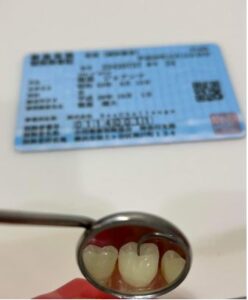 Japan introduced a universal health insurance system for the entire population in 1961. People are able to receive treatment at a relatively low cost. This National Health Insurance covers a wide range of medical treatments, and patients bear only 30% of their medical costs.
Japan introduced a universal health insurance system for the entire population in 1961. People are able to receive treatment at a relatively low cost. This National Health Insurance covers a wide range of medical treatments, and patients bear only 30% of their medical costs.
The brightest side of this system is that general dental treatments are also covered. Looking to get your teeth cleaned? Covered! Need a filling? Covered! How about a crown? Well, mostly covered!
Mostly?
There are some dental treatments that are 70% covered by Japan’s National Health Insurance, but with some conditions. A crown for your front teeth is possible, but only using plastic & fused metal. Crowns for molar teeth on the other hand use silver metal crowns only. Root Canal Treatment is possible, but it will require at least four visits or more.
In layman’s terms, you can get good dental treatment on National Health Insurance, but not the best. Your crowns won’t be the most natural-looking and you may need to get them replaced in a few decades. But in general the quality is quite good.
Why does Japan have so many dentists?
My first 6 months staying in Japan, I noticed there seem to be more dental clinics than convenience stores in Japan. Dentistry has a reputation as being a profitable and easy-to-maintain business. Demand for good dental hygiene has been growing in Japan, so more students are drawn to the profession to help people keep their pearly whites.
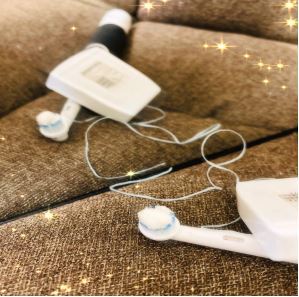 I have great admiration and respect for English-speaking dentists. More and more, foreign patients who can’t speak Japanese need help. Perhaps I should say they can’t speak Dental Japanese: the terms and phrases associated with dental hygiene and care. It’s frustrating when we can’t understand what the dentist is saying.
I have great admiration and respect for English-speaking dentists. More and more, foreign patients who can’t speak Japanese need help. Perhaps I should say they can’t speak Dental Japanese: the terms and phrases associated with dental hygiene and care. It’s frustrating when we can’t understand what the dentist is saying.
So it’s helpful to have more and more bilingual dentists (or at least, dentists that give it their best shot). Even if your local dentist has limited English though, fret not. Stick to the appointment, show up on time, and let them do their job. I’ll go over some basic terms in a moment, but it’s really not that difficult. Don’t be afraid of visiting the dentist in Japan if you haven’t before!
Useful dentistry-related Japanese words
Shikaiin ( ⻭科医院 ) Dental Clinic
Shikaeiseishi ( ⻭科衛⽣⼠) Dental Hygienist
Haisha ( ⻭医者 ) Dentist
Shikajoshu ( ⻭科助⼿) Dental Assistant
Ha ( ⻭ ) Tooth
Nyushi ( 乳⻭) Baby Teeth
Eikyushi (永久⻭ ) Permanent Teeth
Haguki ( ⻭茎) Gums
Maeba ( 前⻭ ) Front tooth
Okuba ( 奥⻭) Back Tooth
Ueno ha ( 上の⻭ ) Upper Tooth
Shita no ha ( 下の⻭) Lower Tooth
Oyashirazu ( 親知らず ) Wisdom Tooth
Shinkei (神経) Dental Nerve
Shinsatsu ( 診察 ) Have a Check-Up
Ha no itami ( ⻭の痛み) Toothache
Chikakukabin ( 知覚過敏 ) Sensitive Tooth
Shiko ( ⻭垢) Plaque
Hanokibami ( ⻭の⻩ばみ ) Stain
Mushiba ( ⾍⻭) Cavity
Ginba ( 銀⻭ ) Silver-crowed Tooth
Tsumemono ( 詰め物) Filling
Ireba (⼊れ⻭ )Denture
Rentogen ( レントゲン) X-ray
Basshi ( 抜⻭ ) Tooth Extraction
Chiryo ( 治療 ) Treatment
Lastly, some tips for home dental care
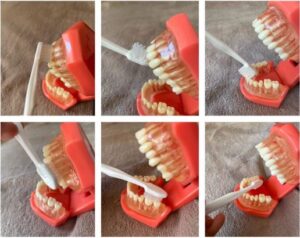 Here’s some advice you’ll get at any dentist in Japan (or otherwise!)
Here’s some advice you’ll get at any dentist in Japan (or otherwise!)
1. Take your soft bristle toothbrush, hold it at a 45 degree angle to your teeth, whether it’s the front teeth or back teeth.
2. Brush gently up and down. Do not scrub roughly, as this causes the thin gum tissue to wear down.
3. Don’t be quick when you brush your teeth. Take at least 2 minutes. Look in the mirror and make sure you cover every area.
4. You may not realize this, but brushing your tongue is good as well! As many germs and bacteria can collect there, it’s always good to give it a light scrub. Especially before bed time.
5. Gently floss between your teeth using a back-and-forth motion. Use your index fingers to direct the floss between the teeth.
6. Lastly, don’t forget to occasionally refresh your best weapons to prevent cavities: plaque-fighting toothpaste, a soft bristle toothbrush, and floss. Especially the toothbrush; you should swap it out regularly.
As George Taylor said, “poor oral health care can result in poor overall health.” Make sure to visit your dentist every two-three months for regular cleaning and check-ups. And don’t forget to brush!
Photo Credits:
Top Image: Atikah Akhtar on Unsplash
Additional photos provided by Jhoanna Fukuya
All other content (text) created by the original author and © 2022 MUSUBI by Borderlink
RELATED
-
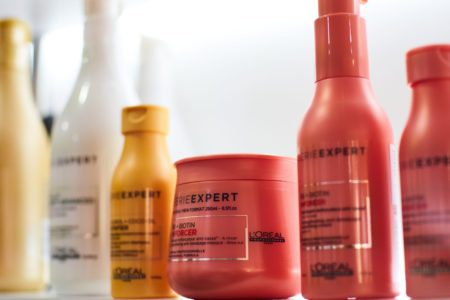
A Day & Night Guide to Skincare
Top photo: Engin_Akyurt on Pixabay Skincare is an important aspect that most of us overlook when moving to a n… -
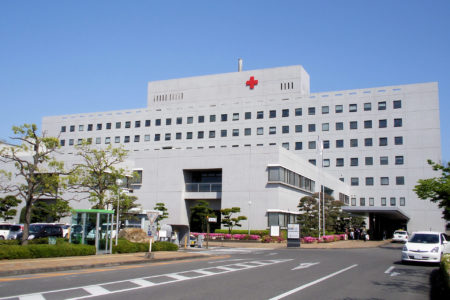
Healthcare in Japan: A 3-Step Guide
Top photo: Okayama Red Cross Hospital, Kita-ku, Okayama by Phronimoi, licensed under the Creative Commons Attr… -

Dance Keeps Spirits High
Top photo by Danielle Cerullo on Unsplash When I’m not teaching in school as an ALT, I teach dance to l…
PEOPLE

Jhoanna Fukuya
Registered Licensed Dental Assistant in Saipan American Dental Clinic
From Saipan but born and raised in the Philippines
Has experienced Japan for 5 years


